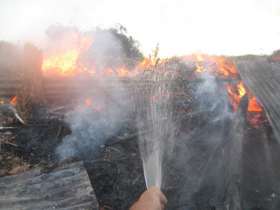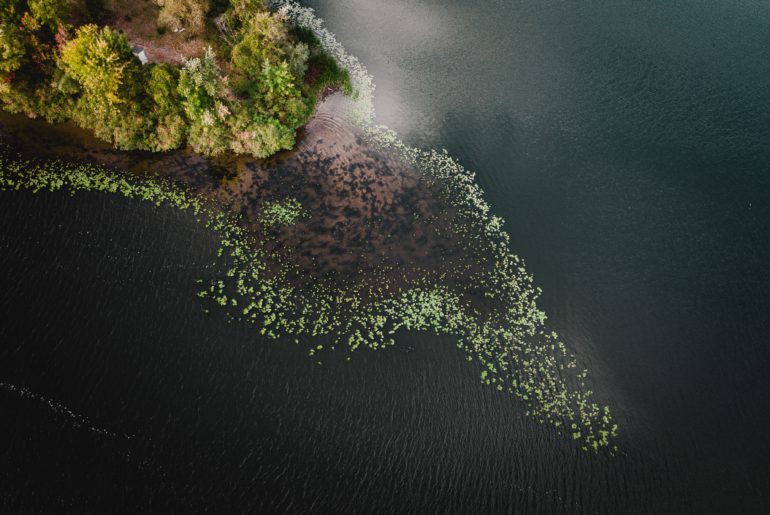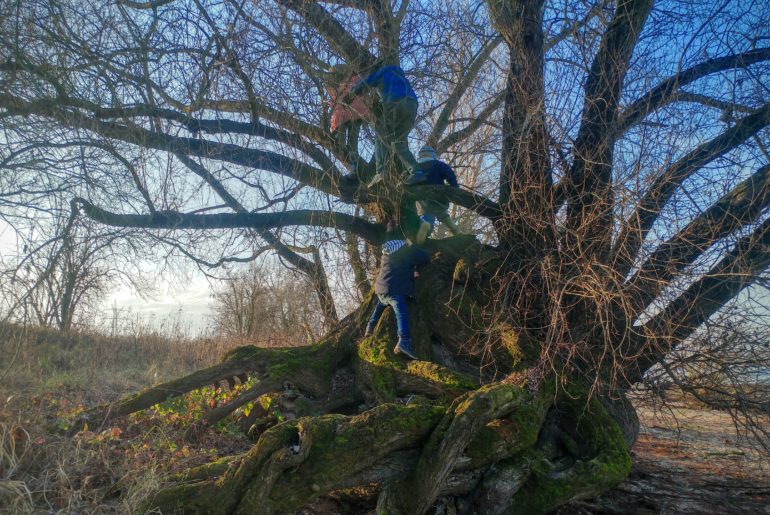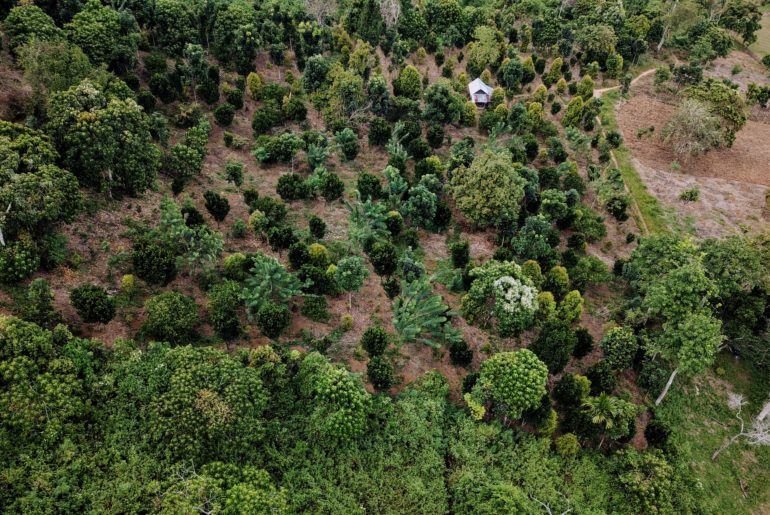Application in practice: A guide on how to make biochar out of slash with low-tech methods instead of simply burning the slash. The biochar can be used to enhance soil quality and improve water retention during the dry season.
Abstract: At the mixed hardwoods and cacao farm of Izabal Agro-Forest in Caribbean Guatemala, instead of burning in the traditional “slash-and-burn” manner, we made an experimental attempt on one hectare to convert into charcoal 10 years of clear-cut, successional, lowland tropical forest re-growth that had been felled to make way for mahogany and cacao planting. The resulting charcoal was to be incorporated into the soil surrounding the cacao seedlings.
Guidance for biochar production
Employing six workers with machetes, a chainsaw, and a pickup truck, the conversion of slashed biomass to charcoal was to be in as low-tech and low-transport fashion as possible. After some trial and error, the following “slash-and-splash” method involving dousing of burning biomass with water was established:
- All logs were sawn into 2 to 3 meter lengths. (Diameters did not exceed 35 centimeters.)
- All woody material on the one hectare was collected into 30 heaps measuring on average 7.5 meters diameter by 2.5 meters height. Dry leaves were shaken to the ground between heaps, and twigs and branches less than 20 mm diameter were left over the ground, the idea being to retain some measure of soil cover and source for soil organic matter.
- Entanglements of vines very difficult to chop with machetes and comprising a problematical bulk of the the felled biomass were rolled to the heap sites. Fire breaks were cleared around each heap.
- A heap was ignited at its top. Then, second-hand, common corrugated roofing tins were leaned vertically against and around the heap in tipi fashion. Rising hot gases within this “chimney” created an updraft effect that drew in air from below and intensified heat dramatically; flames at the top consumed unburned GHG gases and also diminished smoke emission. Roofing tins reflected heat back into the fire, thus containing heat and also allowing workers to approach the burning heap.
- As flames died, leaving a glowing mass of embers, roofing tins were removed one by one and embers were extinguished with water. Large trunks that had not completely carbonized (brands) were collected together and placed under an individual cover of roofing tins and allowed to smolder and carbonize–sealed from oxygen, ideally. Water had been brought to the site in 220-liter drums by pickup truck and was siphoned by gravity to the fires via lengths of garden hose. Each fire required between one and two drums of water to extinguish, but charcoal yield and worker time would have been much more efficient if there had been a steady supply of water and a pump. Backpack-sprayers were also used for control of the fire and for cooling of hot embers.
- Cold charcoal was sun-dried, then collected in sacks and later was pulverized as far as practical using a gasoline powered lawnmower.
Photos by Scott Forsythe
Results and Discussion
Soil protection with Kudzu
After collecting the charcoal, the hectare was seeded with leguminous tropical kudzu (Pueraria phaseoloides) for soil protection and nitrogen. The kudzu after one year eventually outcompeted all unwanted plant growth, however, initially, weed competition against the young cacao had to be controlled with herbicide. Another quite noticeable drawback of allowing biomass to remain over the soil on the experimental hectare, rather than burning it completely as on adjacent hectares of traditional complete burning management, was that young seedlings in the experimental hectare suffered a high rate of insect damage. Periodic earthworm counts were generally higher in the experimental hectare.
Biochar production
The yield for one hectare of 10 years’ tropical forest re-growth was 13.2 cubic meters of charcoal before pulverization, weighing 2250 kg. Ratio of dry charcoal to original, air-dry biomass collected was 7.9% by weight, though we are confident that with practice, equipment, and refinement of technique, this figure could have been improved by at least 50%. In rough comparison, traditional kilns achieve 15-25% efficiency, retorts achieve about 30%, though costs, times, and logistical drawbacks of these methods are considerably more than the one described here. Tropical forest burns in Amazonia result in approx. 2% or less charcoal.
Application
A portion of this charcoal was added to compost and allowed to stand for a month or more, the mix was filled into the planting hole for seedlings, and remaining charcoal was later incorporated into the soil around the established seedlings. As demonstrated by our soil analyses, there will be a soil pH shift toward 7 when charcoal is added to acidic soil, due in part to ash contained in the charcoal as well as to the neutrality of the stable carbon portion of the charcoal itself. However, if charcoal is not “pre-charged” with nutrients (nitrogen, most importantly) and bacteria, there is the risk of soil nutrient immobilization when added directly to soil, the reasons being that charcoal contains tar-like carbon compounds that are available to soil microorganisms which need N and other nutrients in order to process the carbon, and that the adsorptive and absorbtive properties of charcoal can chemically or physically temporarily immobilize nutrients.
To minimize transport and labor costs involved in composting, we now recommend harvest of the kudzu cover crop, mixing the harvest with charcoal, and composting anaerobically by the ton under plastic sheeting. Where composting is out of the question, charcoal enhanced soil has also been demonstrated to make more efficient use of applied, commercial inorganic fertilizers. After time, it was apparent to us that an often overlooked beneficial aspect of charcoal in soil is its capacity for water retention in time of drought, of particular importance in cacao cultivation. We suspect that it was this quality that saved these seedlings during a subsequent long drought, whereas many others planted at the same time without charcoal addition perished.
Resources
Master’s Thesis, Scott Forsythe














